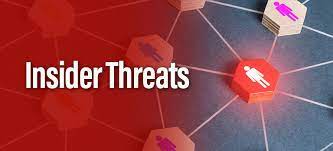Organizations today face an ever-growing threat landscape that extends beyond external attacks. Insider threats, originating from within the organization, pose a significant risk to the security and integrity of sensitive data and assets. Understanding and mitigating these threats is crucial for safeguarding the organization’s operations, reputation, financial stability, and others.
Insider threats refer to the potential risks and vulnerabilities that arise from individuals within an organization who have authorized access to its resources, and information. These individuals may intentionally or unintentionally misuse their privileges, leading to security breaches, data theft, or other malicious activities.
Addressing insider threats is of paramount importance as they can result in severe financial and reputational consequences. Organizations must prioritize proactive measures to detect, prevent, and respond to these threats effectively.
Insider threats can manifest in various forms including:
- Malicious insiders: Disgruntled employees or individuals with ill intentions who intentionally exploit their access for personal gain, sabotage, or espionage.
- Accidental insiders: Well-meaning employees who inadvertently cause security incidents or data breaches due to negligence or lack of awareness.
Insider attacks are often driven by:
- Financial gain: Individuals seeking to profit from selling sensitive information.
- Revenge and personal grievances: Disgruntled employees seeking retaliation against the organization or specific individuals.
Insider attacks can result in substantial financial losses, theft of intellectual property, trade secrets, or sensitive customer data. These incidents may also lead to legal and regulatory penalties, lawsuits, and damage to the organization’s reputation.
Implementing stringent access control mechanisms and privileged account management practices is vital for minimizing insider threats. This includes:
- Role-based access control: Granting employees access permissions based on their job responsibilities and limiting privileges to the minimum necessary.
- Two-factor authentication: Implementing multi-factor authentication methods to ensure secure access to systems and data.
- Regular access reviews: Periodically reviewing and revoking unnecessary access privileges to reduce the potential attack surface.
- Employee training and awareness programs: Organizations should conduct regular training sessions, raise awareness about the consequences of insider threats, and provide guidelines on reporting suspicious activities.
While protecting organizations from insider threats is essential, it is crucial to balance security measures with employee privacy and comply with data protection regulations. Organizations must establish policies and procedures that respect employees’ privacy rights while safeguarding sensitive information. Transparency, clear communication, and involving employees in the development of security policies foster a culture of trust and mutual understanding. By understanding the various aspects of insider threats, implementing best practices, and fostering a culture of security, organizations can minimize risks and ensure the integrity of their operations and sensitive data.
